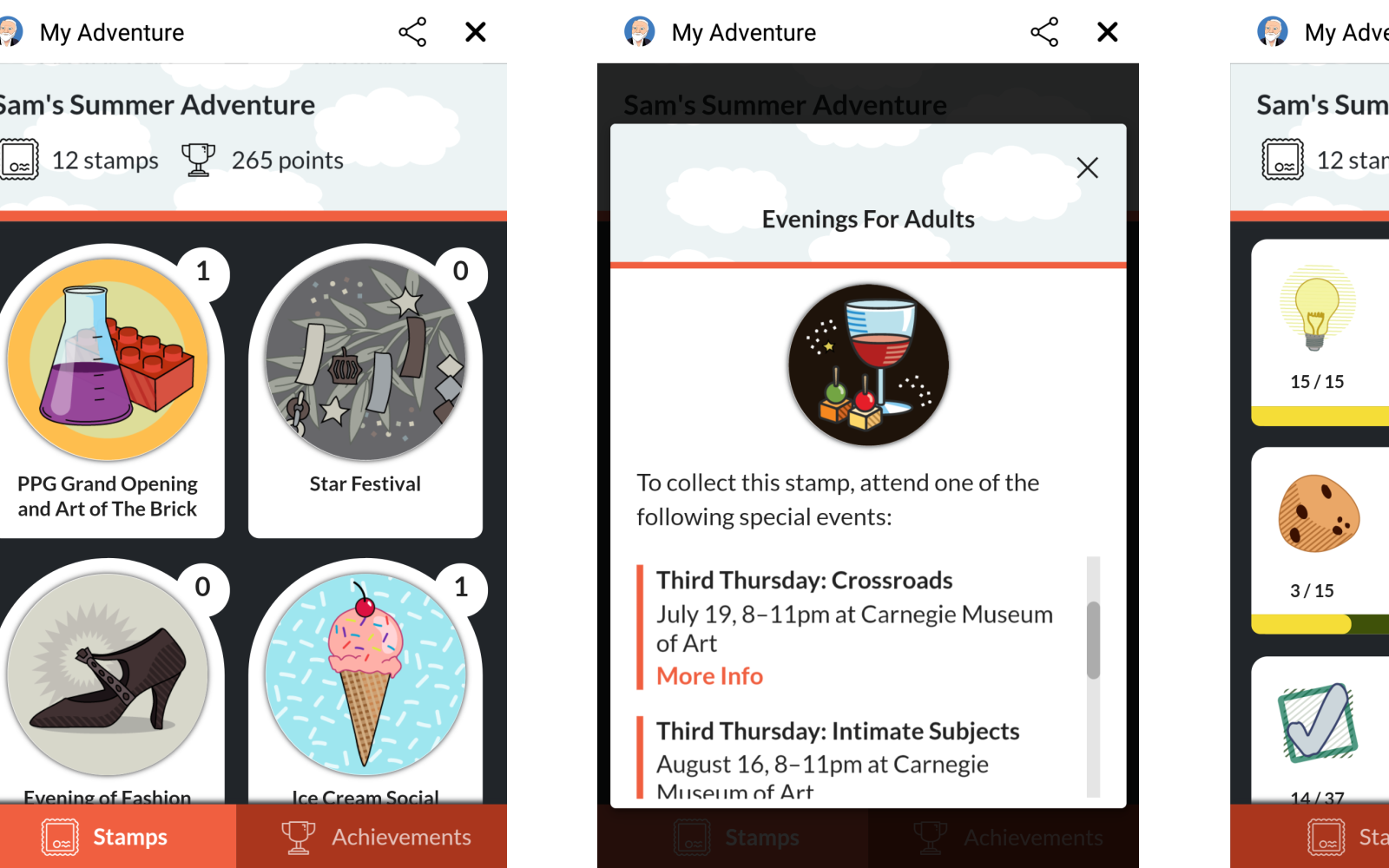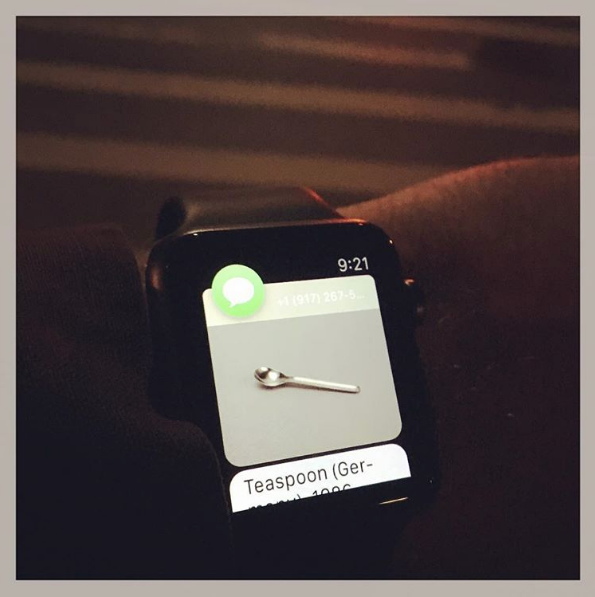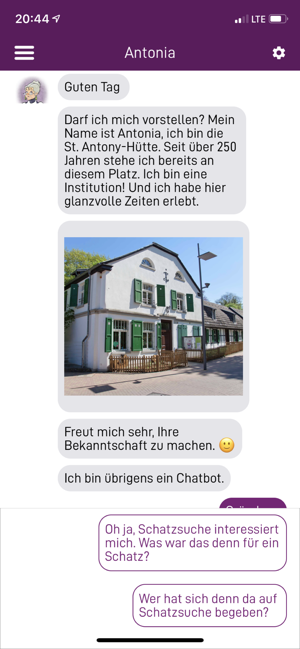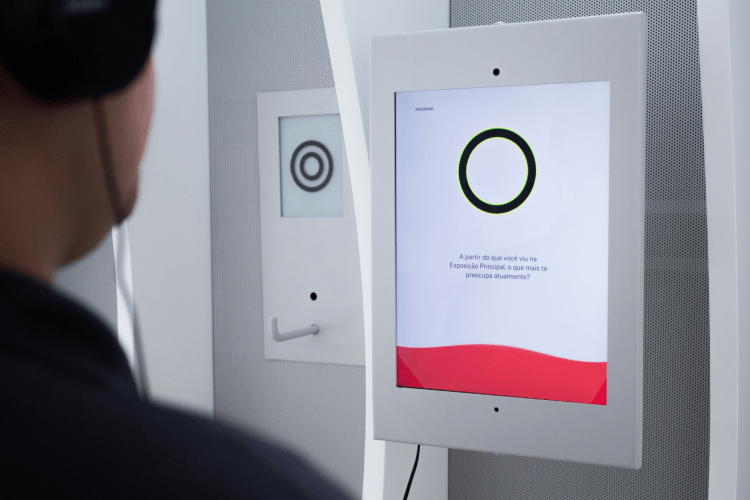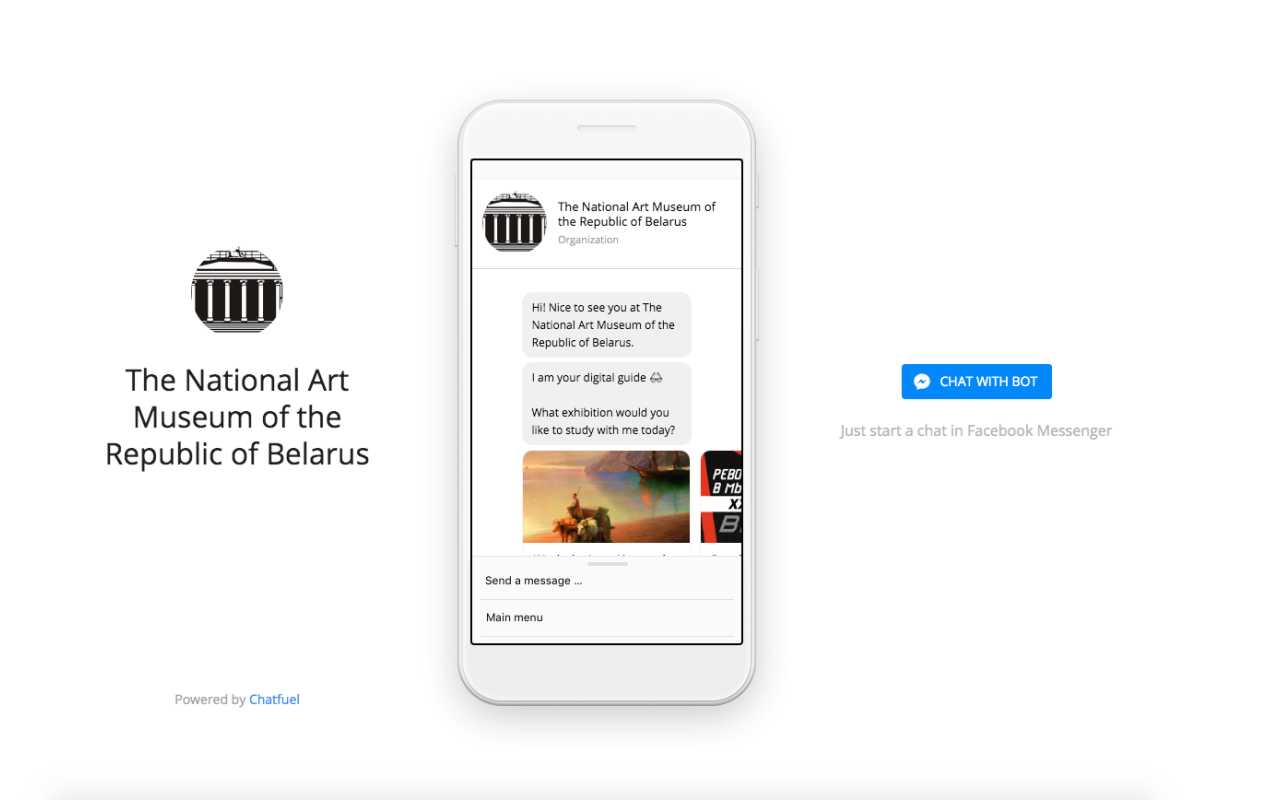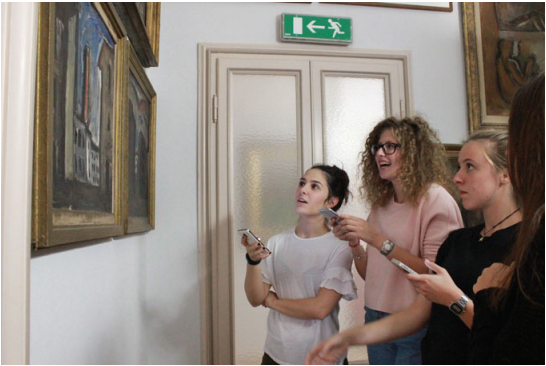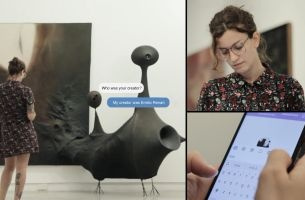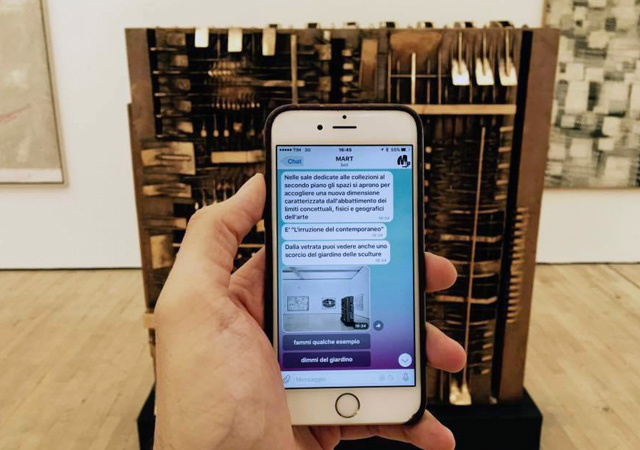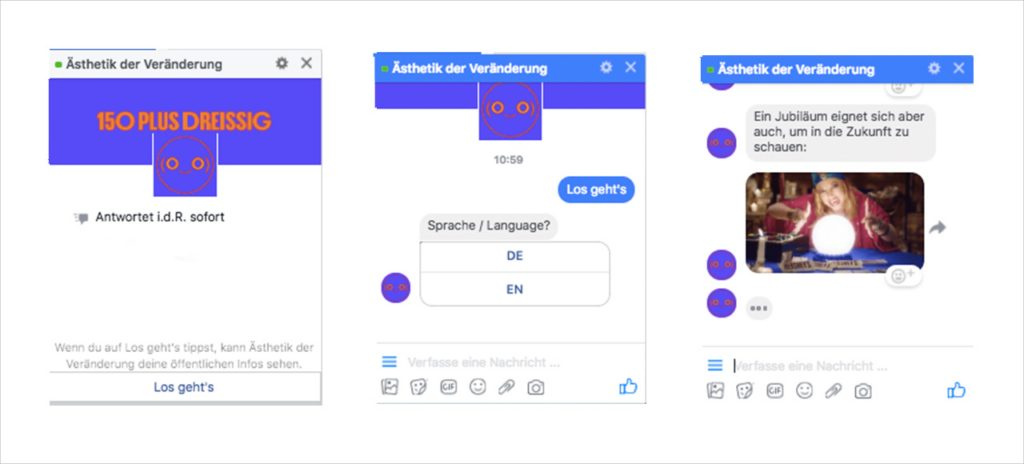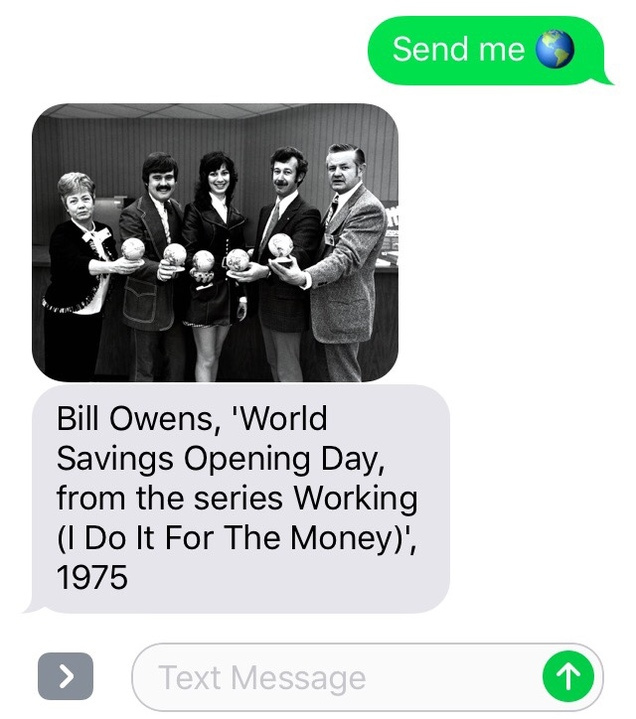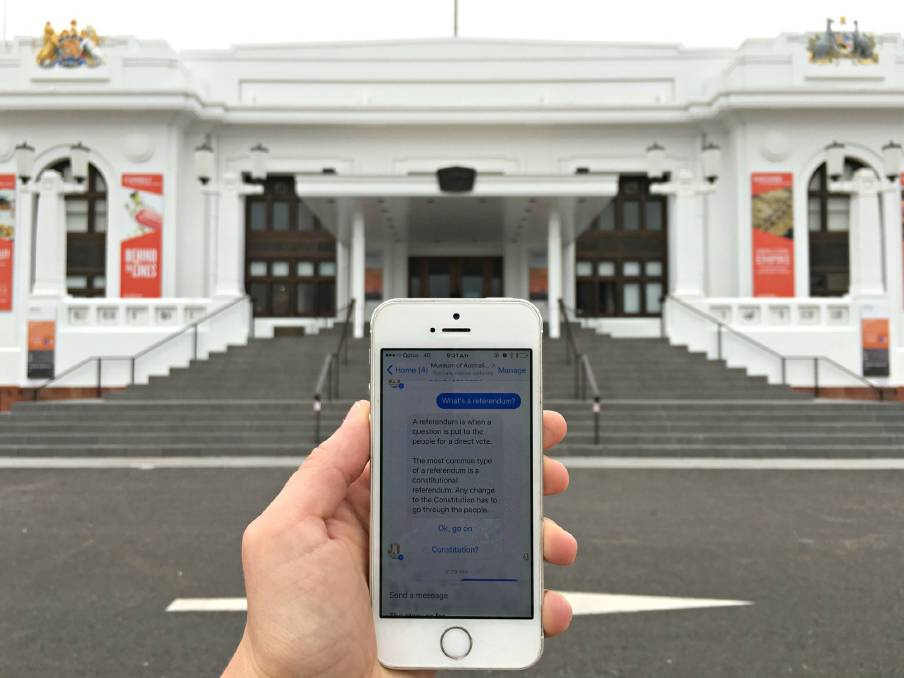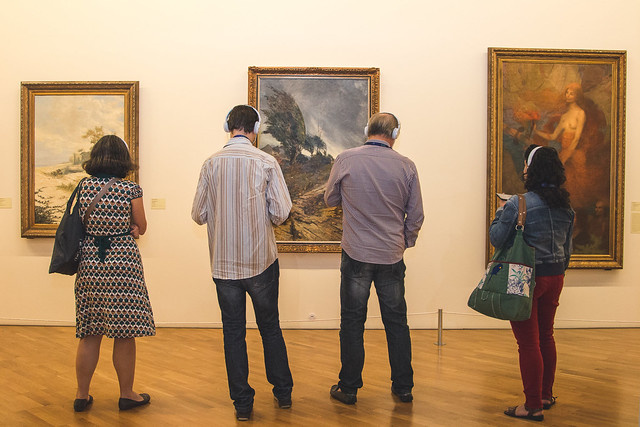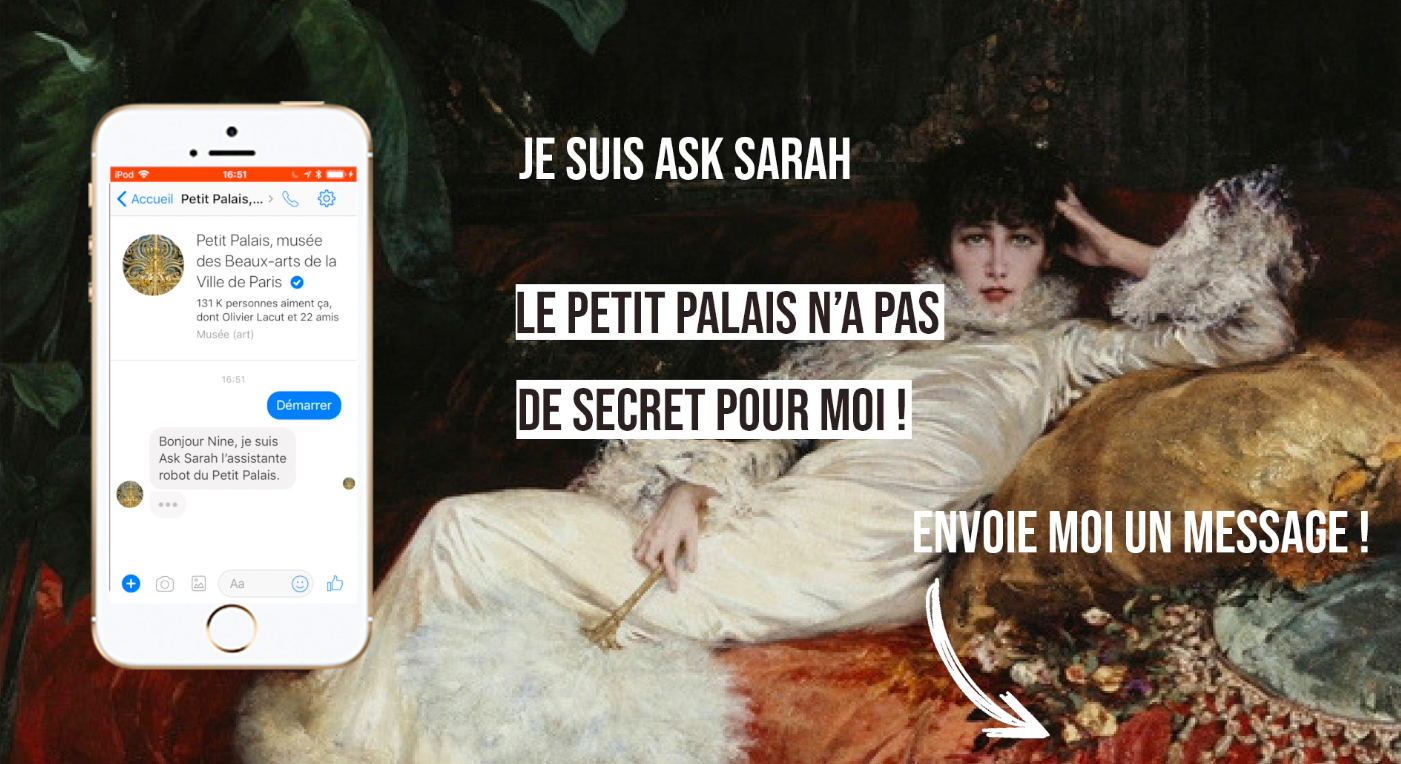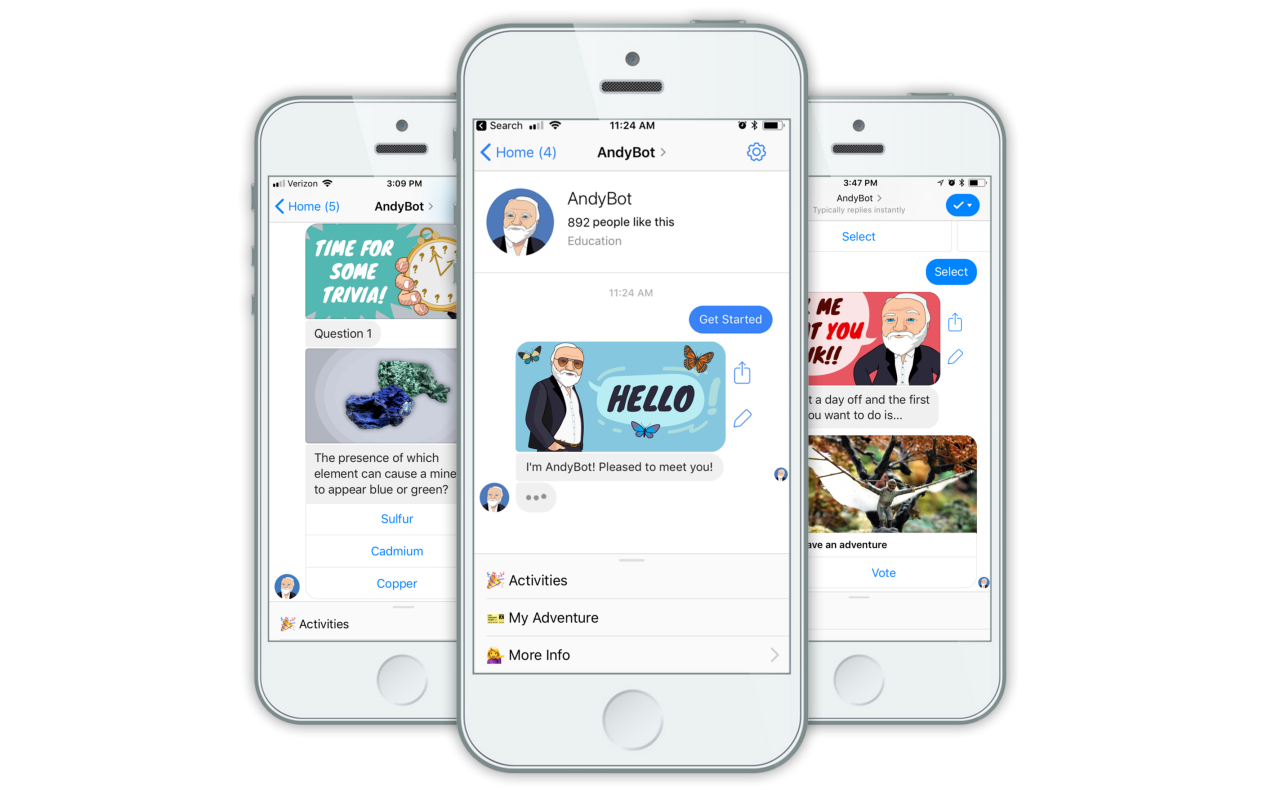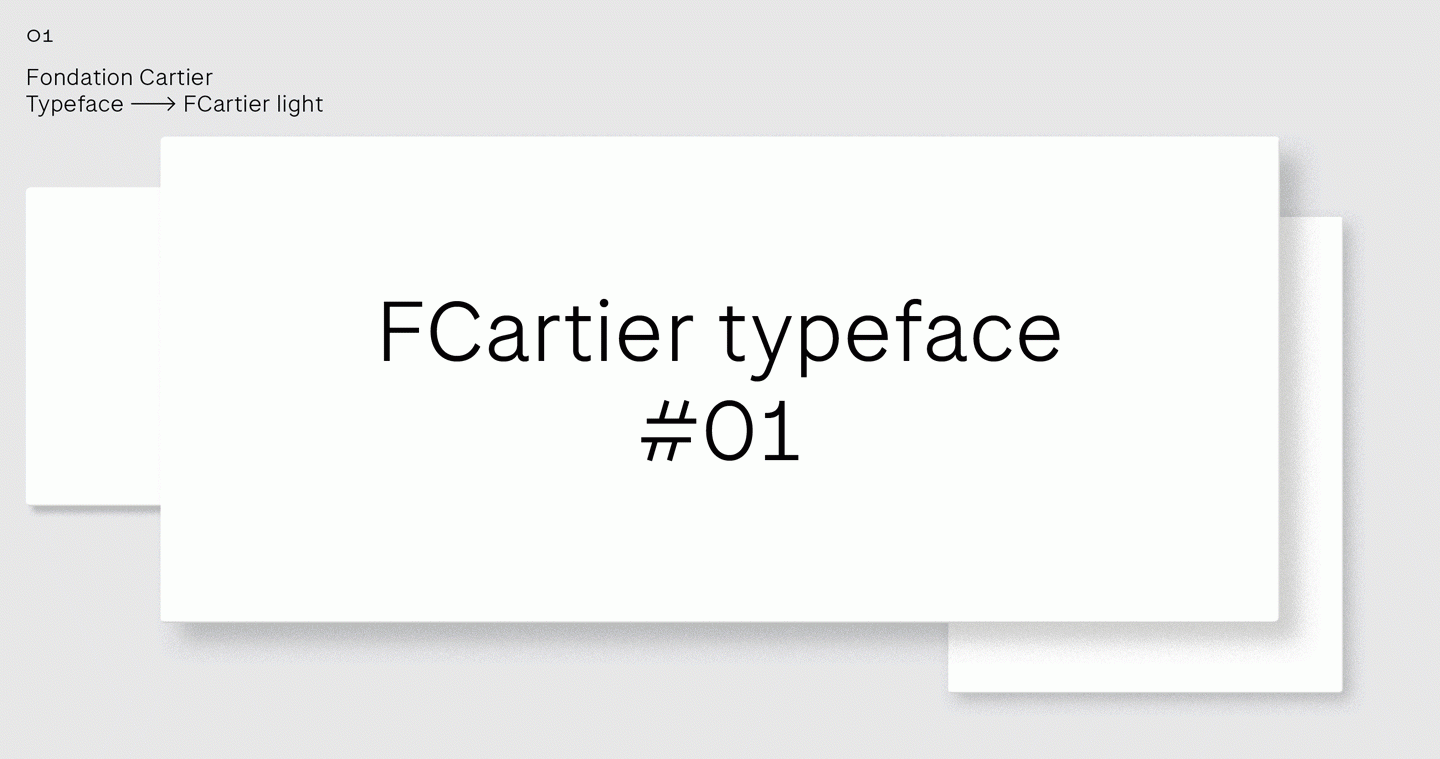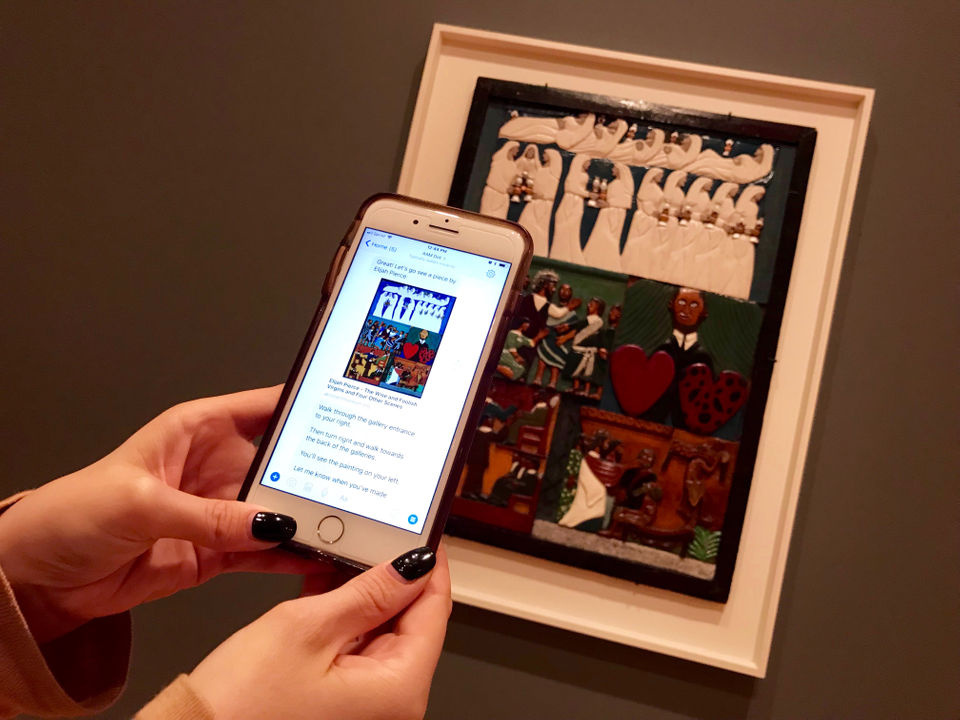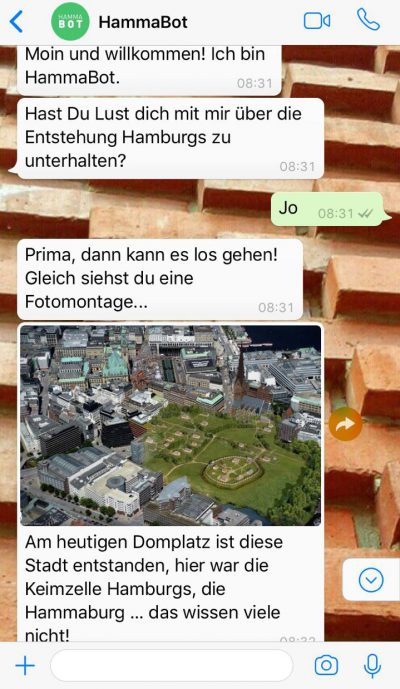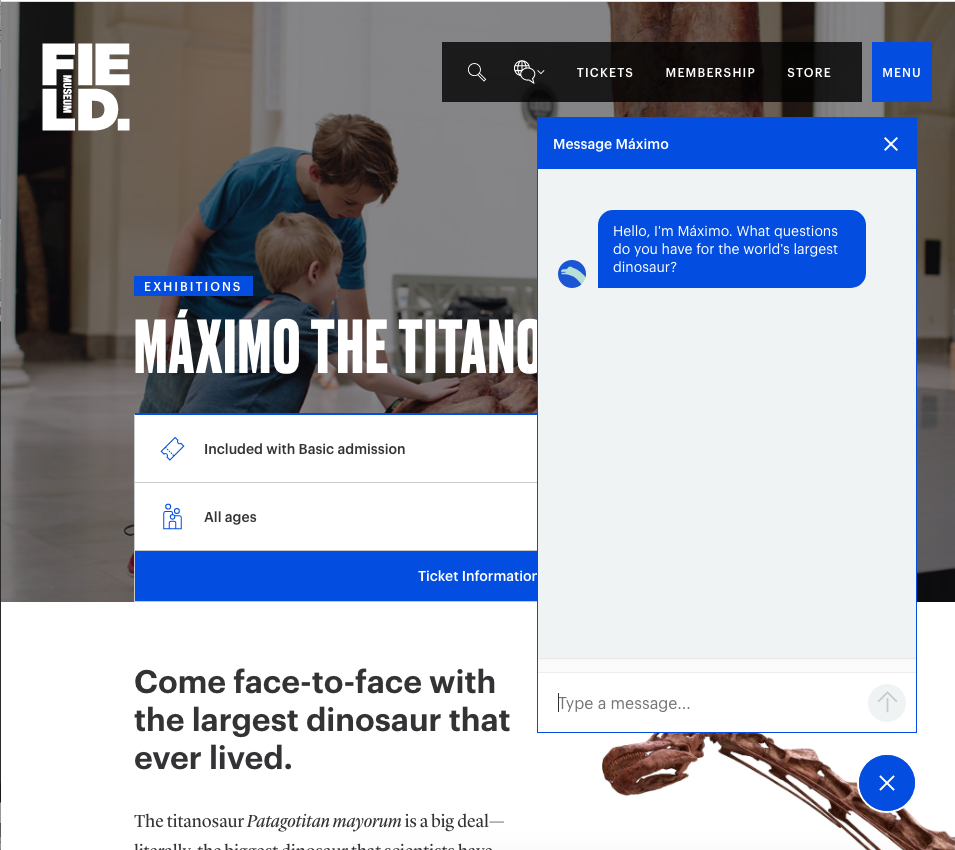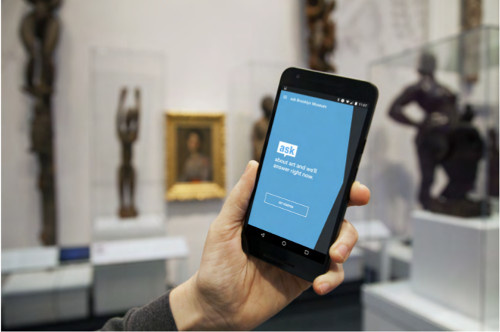Talk to me! Chatbots in Museums
A Chronological Overview
Museums have been integrating chatbots into their communication and mediation work since 2004.
Some use frequently used messenger services such as Facebook Messenger and WhatsApp. Others adapt IBM's intelligent system Watson to their needs. Also customized chatbots, some programmed as apps, support museums in their dialogue with their visitors. The digitally communicated content ranges from purely informative – information on opening hours, directions, events – to playful encounters with historical objects and places.
Examples from Europe, North and South America are presented here in chronological order.
The occasion for the research on the history of chatbots is a ZKM project entitled »As We May Speak«: Since 2018, the ZKM has been developing a chatbot as part of the funding program "Digital Paths to the Museum II". The chatbot is designed to answer service requests, help to get information on the website more quickly and guide visitors through the exhibition »Writing the History of the Future«.
MAX (2004)
As a virtual museum guide, »MAX«, the chatbot avatar of the Heinz Nixdorf MuseumsForum, accompanies visitors through the exhibition. The bot was developed more than fifteen years ago.
Institution: Heinz Nixdorf MuseumsForum, Paderborn
Object Phone (2013)
Micah Walter keeps developing »Object Phone«: Initially, visitors could call or write to individual works; this was followed by an MMS subscription for daily pictures from the collection. Subscribers can also reply to these messages. If the chatbot does not understand these messages, they are forwarded to the business communication platform Slack, where they can be edited by employees. Now Walter plans to program »Object Phone« to become more intelligent.
Institution: Cooper-Hewitt Smithsonian Design Museum, New York City
St. Antony-Hütte (2014)
The LVR Industrial Museum developed the St. Antony-Hütte app with an integrated chatbot that provides information about the historical industrial site. The app also includes an augmented reality module that can be used to call up an additional level of information in the exhibition space on your own device.
Institution: LVR Industrial Museum, Oberhausen
IRIS+ (2015)
Together with IBM, the Museu do Amanhã in Rio de Janeiro developed »IRIS« into »IRIS+« . Since the opening of the museum in 2015, »IRIS« has been available to visitors as a digital assistant. Thanks to the update to "IRIS+", the program is now equipped with an artificial intelligence program. Four months of training were necessary to enable the chatbot to conduct a conversation in Portuguese and English.
Institution: Museu do Amanhã, Rio de Janeiro
Framework: IBM Watson
Bot (2016)
The National Art Museum of the Republic of Belarus also uses Facebook Messenger to communicate its permanent exhibition. Activated by the greeting "Hello", the chatbot provides information about the work such as title and year of creation.
Institution: National Art Museum of the Republic of Belarus, Minsk
Platform: Facebook Messenger
Chat Game (2016)
In the four historic houses of the Case Museo di Milano, visitors discover the collection on a treasure hunt. The game, available via Facebook Messenger or Telegram, was designed for teenagers to draw their attention to the art objects.
Institution: Case Museo di Milano
Platform: Facebook Messenger, Telegram
Dialog with the artwork (2016)
The Museo de Arte Moderno de Buenos Aires brings its visitors into dialogue with its works of art via a chatbot. The museum's first conversation partner in this way is the sculpture »Bio Cosmos« by Emilio Renart.
Institution: Museo de Arte Moderno de Buenos Aires
Martmuseumbot (2016/2017)
Since 2016, the Museo di arte moderna e contemporanea di Trento e Rovereto has been offering its public an interactive guided tour through collection presentations and special exhibitions. Initially only available on Telegram, the chatbot has also been accessible via Facebook since 2017.
Institution: Museo di arte moderna e contemporanea di Trento e Rovereto
Platform: Facebook Messenger, Telegram
Anne Frank House Bot (2017)
The Facebook chatbot learns with every interaction. Thanks to its deep learning capabilities, it provides visitors on site as well as remotely with increasingly individualized information on Anne Frank's biography, the historical context, but also on opening hours and admission prices.
The Facebook chatbot learns with every interaction. Thanks to its deep learning capabilities, it provides visitors on site as well as on the net with increasingly individualized information on Anne Frank's biography, the historical context, but also on opening hours and admission prices.
Institution: Anne Frank House, Amsterdam
Platform: Facebook Messenger
Appliedguide (2017)
On the occasion of its 150th anniversary, the University of Applied Arts Vienna also looked to the future within the framework of the exhibition "Aesthetics of Change". A digital exhibition guide led through this review and outlook. Texts, pictures, videos and GIFs provided information about exhibits in Facebook Messenger.
Institution: Universality for Applied Arts Vienna
Platform: Facebook Messenger
Credo (2017)
The Stadtmuseum Neuburg developed the exhibition »FürstenMacht und wahrer Glaube. Reformation and Counter-Reformation« 2017 the chatbot »Credo«. Available as an app on your own smartphone or accessible via an interface installed in the show, the chatbot answered visitors' questions. The self-learning bot »Credo« will also be available to the museum after the exhibition.
Institution: City Museum Neuburg
Framework: IBM Watson
The chatbot's website is no longer active.
Hello!Museum (2017)
Some German museums use the services of Hello!Guide for special exhibitions. With Hello!Museum, the Hamburg start-up offers the possibility to set up a chatbot via WhatsApp. Since 2017, the German Historical Museum, Berlin, the Historical Museums of Hamburg, the Jewish Museum Berlin, the Kunsthalle-Emden, the Kunstpalast in Düsseldorf and the MAKK - Museum für Angewandt Kunst Köln have been experimenting with the App. Here, museum director Petra Hesse reports on her experiences.
Send me SFMOMA (2017)
With the SMS service »Send me SFMOMA« the San Francisco Museum of Modern Art is making works from its collection visible that are not on display in the permanent exhibition. The chatbot responds to requests with the words "Send me" and a keyword or emoji with a picture and details of the work.
Institution: San Francisco Museum of Modern Art Works
Platform: SMS
The 1967 Referendum Chatbot (2017)
To mark the 50th anniversary of the nationwide vote, in which over 90 percent of Australians voted for indigenous rights, the Museum for Australian Democracy in Canberra used a chatbot to recount the historic event. A Facebook profile is sufficient to access the information.
Institution: Museum for Australian Democracy, Canberra
Platform: Facebook Messenger
Voice of Art (2017)
Equipped with headphones and the »Voice of Art« app, visitors to the Pinacoteca de São Paulo can immerse themselves in the history of seven works of art in the collection. For this purpose, the chatbot uses Natural Language Processing from IBM Bluemix and Beacon Bluetooth sensors for geolocation.
Institution: Pinacoteca de São Paulo
Framework: IBM Bluemix, IBM Watson
Ask Sarah (2018)
Actress Sarah Bernhardt is the name patron of the Facebook Chatbot at Paris' Le Petit Palais, her portrait of Georges Clairin his face. »Ask Sarah« answers all questions about the visitor service.
Institution: Le Petit Palais, Paris
Platform: Facebook Messenger
CarnegieBot! (2018)
With the goal of integrating the Carnegie Museums of Pittsburgh into the everyday life of visitors, the CMP studio developed "CarnegieBot!". Since 93 percent of the audience was already using the Facebook news app on their end devices, the studio built on this.
Institution: Carnegie Museums of Pittsburgh
Platform: Facebook Messenger
Chat Bot Fondation Cartier (2018)
On the home page of the Fondation Cartier pour l'art contemporain's redesigned 2018 website, all questions regarding the visit can be answered conveniently via a chatbot. The blue smiley of the bot can also be written to on all other pages at any time.
Institution: Fondation Cartier pour l'art contemporain, Paris
Dot (2018)
The Akron Art Museum in Akron, Ohio, baptized its museum bot "Dot". The total of 60 works to which the avatar can lead visitors via Facebook Messenger are used as an opportunity to reflect not only on art, but on life in general.
Institution: Akron Art Museum, Akron, Ohio, USA
Platform: Facebook Messenger
Hammabot (2018)
As part of a dual digital strategy to revitalize Hamburg's Cathedral Square, the Archaeological Museum Hamburg developed »ArchaeoScreen«, a digital advertising pillar, and »Hammabot«, a chatbot accessible via WhatsApp. The interaction tool was developed in cooperation with the start-up Hello!Guide.
Institution: Archaeological Museum Hamburg
Platform: WhatsApp
Message Máximo (2018)
Online or via SMS, visitors to the Field Museum in Chicago ask questions to the over 37-meter-long reconstruction of the dinosaur Patagotitan mayorum, called Máximo. Among other things, they learn about the world in which its conspecifics lived over a million years ago.
Institution: Field Museums, Chicago
ASK Brooklyn Museum (2015)
Users of the award-winning »ASK Brooklyn Museum« app can use the chat function to get answers to all their questions - but these are not written by a machine, but by human experts. In this way, visitors can access archaeological, anthropological and art historical knowledge at any time.
Institution: Brooklyn Museum, New York City
Framework:
Platform:
Users of the award-winning "ASK Brooklyn Museum" app can use the chat function to get answers to all their questions - but these are not written by a machine, but by experts. In this way, visitors can access archaeological, anthropological and art historical knowledge at any time.
Institution: Brooklyn Museum, New York City
Research: Antonia Kölbl, Margit Rosen
Text: Antonia Kölbl
